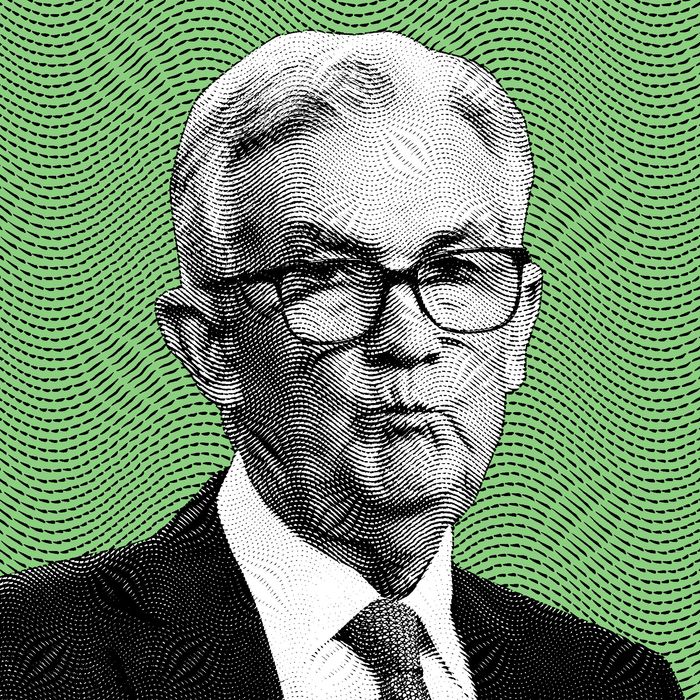
Photo-Illustration: Intelligencer; Photo: Drew Angerer/Getty Images
This year has felt like a long one, all of us nervously waiting for things to get even worse. I’m talking specifically about the economy here. Inflation’s surge was so sharp — topping out at 9 percent in June — that it drowned out all the positives, and set a tone of despaire in this strange, chaotic year. Why wouldn’t it? Even though unemployment remained low, the solid wage gains workers have seen weren’t enough to overcome the higher cost of living. Plus, with with the war in Ukraine and OPEC+ sending oil prices higher, and everyone waiting for the delayed effects of the Federal Reserve’s aggressive interest rate hikes, it only made sense to brace for a much worse 2023. Recession, stagflation, depression… and who knows what other terrible things. But after ten months of bad news, data this month shows that 2022 may just end with a positive vibe – setting a relatively hopeful tone for the year ahead.
In about two weeks, Federal Reserve governors are going to hold a meeting that will define the economy for at least the start of next year. The size of the next interest rate hike will be their message. On Wednesday, the central bank’s chair, Jerome Powell, gave a speech that hinted he was ready to start easing off on economy-killing (but also inflation-killing) rate hikes after nearly a year of the Fed’s most aggressive campaign in decades. “The time for moderating the pace of rate increases may come as soon as the December meeting,” he said, in his normally understated fashion. In many ways, it was a rehash of speeches he’s made prior — ones that saw the Wall Street sell off in dramatic fashion, when it seemed like he wasn’t yet ready to stop jamming on the economic brakes. This time, the Dow Jones Industrial Average put on the party hat and hit the punch bowl early, rising more than 700 points, the highest point since April.
What changed? The Fed has been making clear that these measures weren’t going to last forever — some members have openly fretted about how overdoing it could break the economy — and have been on the lookout for signs of when to cool it down. Inflation has been fairly flat the last few months, and is projected to keep sliding downward. (The November inflation report is scheduled to be released a few days before the Fed meeting). On Wednesday, the federal government also released two other data points that give the Fed cover to start slowing down its interest rate hiking plans. The first is that the number of job openings fell by 353,000 in a month, even as people keep quitting their jobs. (The Fed is looking to tamp down hiring as a proxy for slowing business growth, which it hopes will trickle down to keep prices from moving higher. While the overall number of job openings are relatively high, they’re moving in the direction Powell wants to see.) The other is that the economy grew by 2.9 percent in the last quarter, which makes a recession less likely. The unemployment rate is still 3.7 percent, which is near historical lows, and the next report on Friday isn’t expected to show much of a change.
It’s not like the economy is booming now, but it’s not not-good either. From here on out, the Fed is expected to keep its interest rates high for a relatively long period of time, and the effects of that are unpredictable. Home prices have already started to contract at levels comparable to the 2008 housing crisis. If mortgage rates stay as expensive as they are for another few years, it could keep millions in underwater homes, while starting off a cycle where housing finally became affordable for millions of people, giving them the ability to build wealth through a market that they have been shut out of recently.
But for now, the pall appears to have lifted. Globally, Europe appears to have enough gas to keep from freezing through the winter, and many of the thorniest supply chain snarls that propped up around the Ukraine war have been resolved. Gasoline is about the same price as it was a year ago, before everyone started to complain about it. Sure, things suck if you work in crypto or at Twitter, but if that’s you, you’re probably still doing OK. (Unless your name is Sam Bankman-Fried). For everyone else, it looks like Powell could possibly pull off cooling the economy without breaking it.
Why The Economy Is Starting To Feel Good All Of A Sudden - New York Magazine
Read More
No comments:
Post a Comment